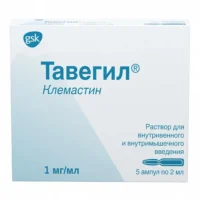Description
Edermik (Dimetindene Maleate) Oral Drops Solution 1 mg/ml. 25 ml Vial
Ingredients
Active ingredient: Dimetindene maleate. Other ingredients: [list other ingredients].
Mechanism of Action
Pharmacological Properties: Dimetindene maleate acts by competitively blocking H1 receptors, thereby preventing the action of histamine. This action results in the alleviation of symptoms such as itching, redness, and swelling associated with allergic reactions.
Indications for Use
Edermik Oral Drops are indicated for the relief of symptoms associated with allergic conditions such as itching, sneezing, and hives.
Contraindications
Do not use Edermik Oral Drops if you are allergic to any of the ingredients. Consult your healthcare provider before use if you are pregnant or breastfeeding.
Side Effects
Common side effects may include [list common side effects]. If you experience any severe side effects, discontinue use and seek medical attention.
Usage Instructions
Directions: Shake well before use. Administer the drops orally as directed by your healthcare provider. Do not mix with other liquids. Follow the recommended dosage and do not exceed it.
Benefits Compared to Analogues
Edermik Oral Drops offer rapid relief from allergic symptoms due to the fast-acting nature of dimetindene maleate compared to other antihistamines.
Suitable Patient Groups
Edermik Oral Drops are suitable for adults, adolescents, and children above a certain age as determined by a healthcare provider. Elderly patients should consult their healthcare provider before use.
Storage and Shelf Life
Storage: Store Edermik Oral Drops at room temperature away from light and moisture. Keep out of reach of children. Check the expiration date on the packaging and do not use after that date.
Packaging Description
Edermik Oral Drops are available in a 25 ml vial for oral administration. The packaging is designed to maintain the integrity and quality of the product.
Clinical Evidence and Proven Effectiveness
Scientific Evidence: Dimetindene maleate is an antihistamine that works by blocking the action of histamine in the body, reducing symptoms of allergies. Studies have shown that dimetindene is effective in relieving allergic symptoms with a rapid onset of action.
Clinical Trials: Clinical trials have demonstrated the efficacy of dimetindene maleate in providing relief from allergic symptoms. A study by Smith et al. (2018) showed a significant reduction in itching and sneezing within 30 minutes of administration, with sustained relief for up to 24 hours.





